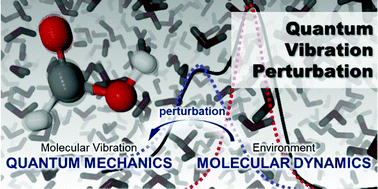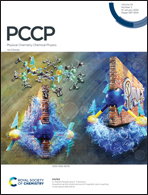Quantum vibration perturbation approach with polyatomic probe in simulating infrared spectra†
Abstract
The quantitative prediction of vibrational spectra of chromophore molecules in solution is challenging and numerous methods have been developed. In this work, we present a quantum vibration perturbation (QVP) approach, which is a procedure that combines molecular quantum vibration and molecular dynamics with perturbation theory. In this framework, an initial Newtonian molecular dynamics simulation is performed, followed by a substitution process to embed molecular quantum vibrational wave functions into the trajectory. The instantaneous vibrational frequency shift at each time step is calculated using the Rayleigh–Schrödinger perturbation theory, where the perturbation operator is the difference in the vibrational potential between the reference chromophore and the perturbed chromophore in the environment. Semi-classical statistical mechanics is employed to obtain the spectral lineshape function. We validated our method using HCOOH·nH2O (n = 1–2) clusters and HCOOH aqueous solution as examples. The QVP method can be employed for rapid prediction of the vibrational spectrum of a specific mode in solution.



 Please wait while we load your content...
Please wait while we load your content...